A Flybrary for Anthony
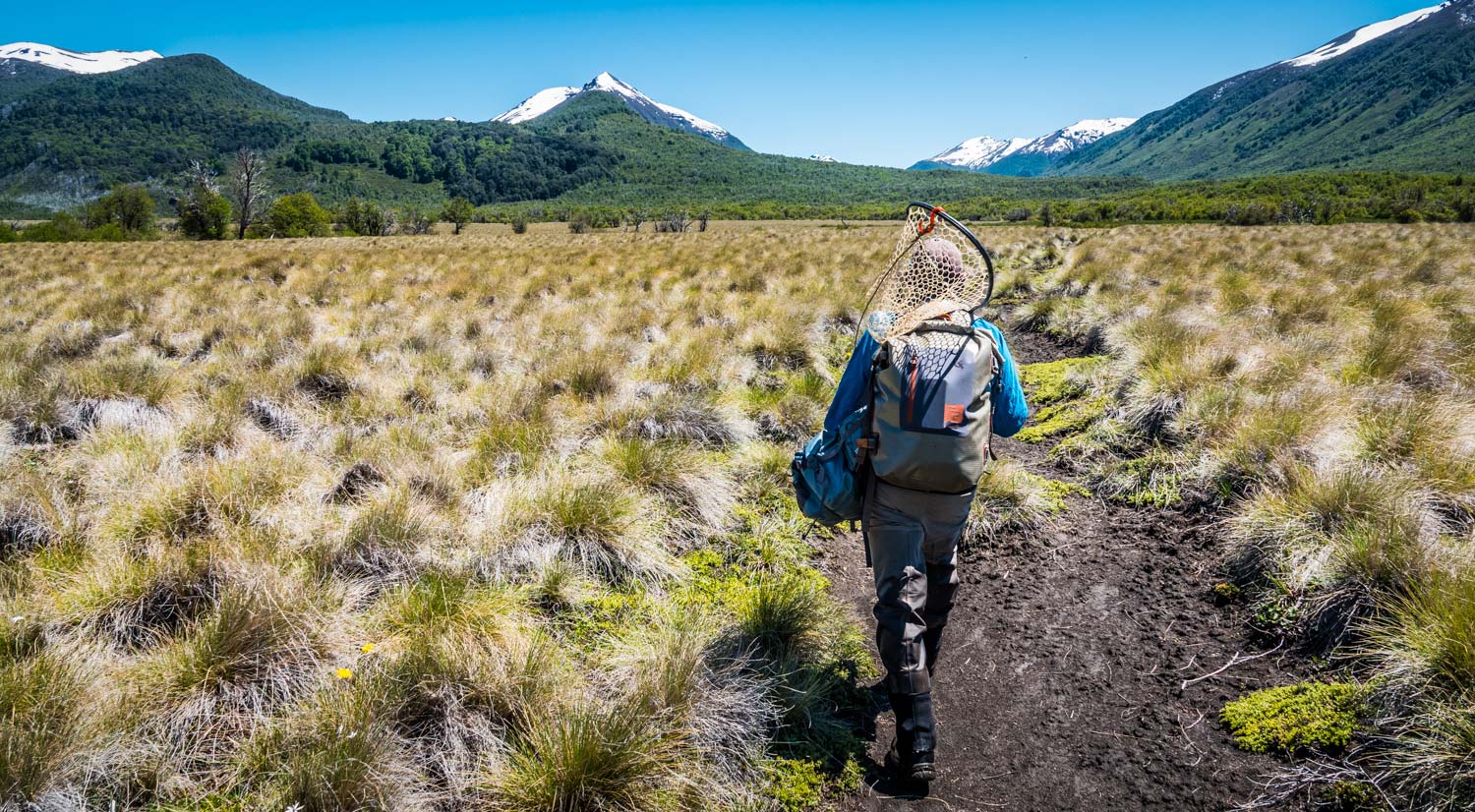
By Mark Greer,
WHEN MY SON, ANTHONY, SUDDENLY DIED IN MARCH 2011 IT WAS BEYOND DEVASTATING.
His loss was the most excruciating pain that I’ve experienced during my life time. Anth was a talented fly fisherman and a Green River Outfitters Guides Association (GROGA) certified guide on the famed Green River below Flaming Gorge Reservoir. He was a college student, he tied his own flies, and he fished every waking moment that he could. He was also the kind of angler that would walk up to another angler on the water, strike up a conversation, offer them a secret tip for that specific spot, and then leave them with a couple of flies which he’d been successful with that day. He was also a fly-fishing evangelist, as everyone that expressed an interest in fly-fishing, Anth would take them out with him – teach them to cast, and give them the needed gear to get them started and off on the right foot.
In an effort to cope with the loss of my son, I did two things. I kept a journal where I’d write my thoughts and what I was struggling with, and I started a (picture) scrapbook of all his fishing adventures. I also decided during that first year of his passing that I’d do a special remembrance project for each year for 10-years. These projects, along with the journal and scrapbook, became my makeshift-therapy for dealing with my son’s death. Here’s a list of those projects.
Read More »Flood Tide Redfish

By Owen Plair
I ALWAYS TELL MY CLIENTS THAT THE FLOOD TIDES ARE A GIFT, TO ANGLERS, FROM MOTHER NATURE.
Targeting tailing redfish on flood tides, from Northern Florida all the way to North Carolina, is one of the most unique opportunities for fly anglers. Something about seeing a tail slowly cut through the top of the water column, surrounded by short spartina grass, on a flat that is only covered by water a few times a month is simply special. Watching these fish casually tail their way through the flat, digging their noses in the mud looking for fiddler crabs is almost as fun as watching them at the end of your fly line.
This is a simple and short explanation of this unique style of redfish and will be the introduction to more articles on flood tide redfishing, which will be more detailed on characteristics of flats, fishing, presentations, fly selection, and equipment.
What is a flood tide?
A flood tide is a larger than normal tide that pushes water onto short spartina grass flats, allowing redfish to feast on the thousands of fiddler crabs that live there. In areas where flood tides occur, there is a lot more tidal flow than most redfisheries in the US. For example, here in Beaufort our average tide is between 6-7 ft, but your flood tides would be 7.5-8.5 ft which pushes enough water on these short grass flats for the redfish to move in.
On average we get around 10-15 of these tides per month, depending on moon phases, and only fish the floods from the middle of March till the end of November, depending on weather patterns. Once the water temp gets below 65 the fiddlers go down and the redfish stop tailing. No food means no tails. Tide charts are your best friend when it comes to flood tides and I seem to find myself always looking forward to the next set of floods!
How do you fish a flood tide?
When fishing the flood you usually want to start around
Read More »Land More Bonefish By Safely Clearing Your Line: Video
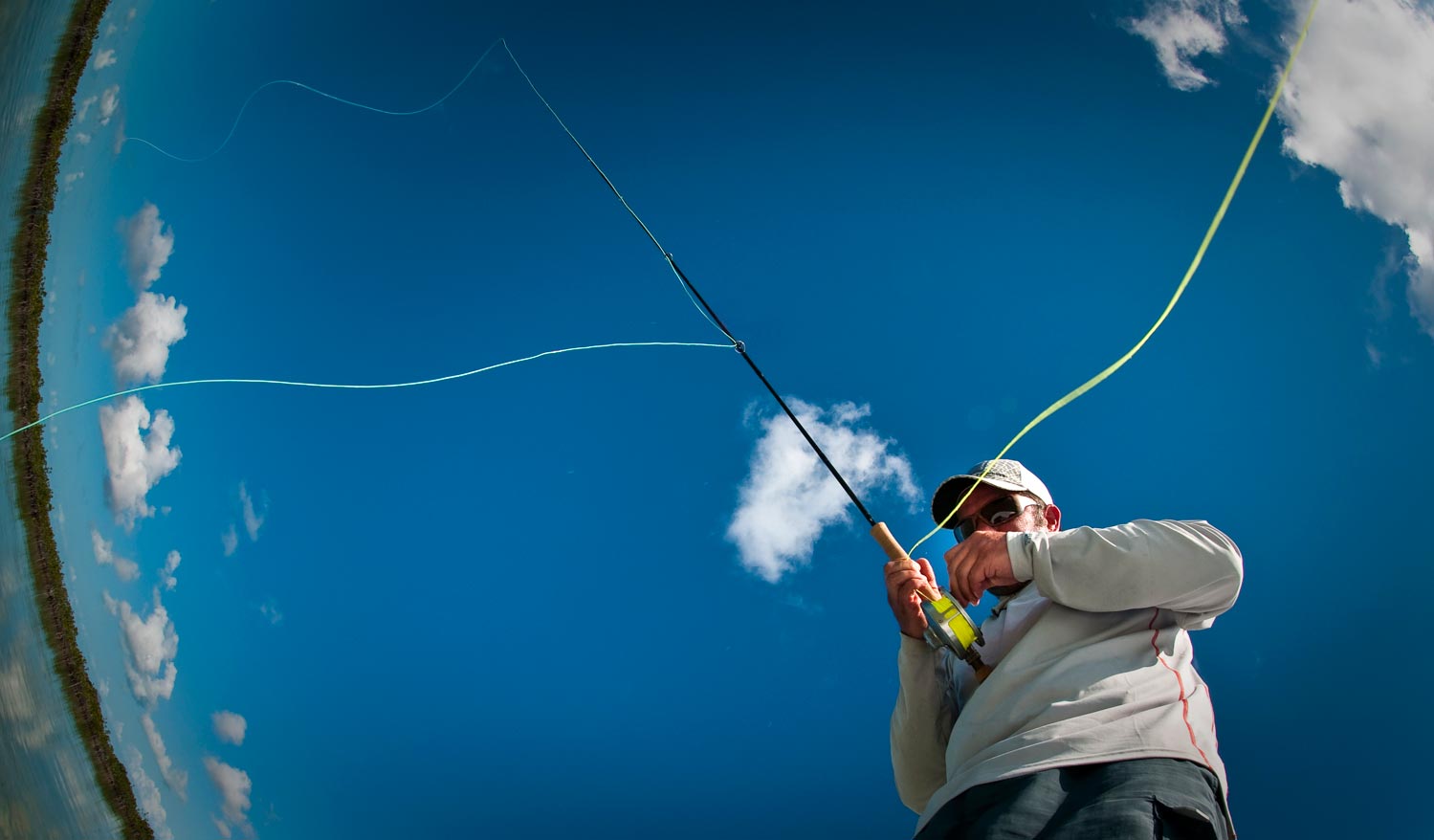
A lot of bonefish are broken off in the first few seconds of the fight.
One of the most common problems for new bonefish anglers is managing the whirlwind of fly line created by the fish’s first blistering run. If left to its own devices that line will find something to wrap around. Maybe your real seat or reel handle or even your head. Whatever it finds, these powerful fish will break off immediately when the line comes tight.
It’s a situation that’s easy to avoid, once you know how. Once you strip set on a fish, just separate your hands by at least three feet and let the line slip through your fingers, keeping pressure on the fish, until all of the line is all out. Then you can use the reel to really put some pressure on the fish.
WATCH THIS VIDEO TO SEE HOW IT’S DONE.
Read More »Getting in Bed With Bass, Part 2
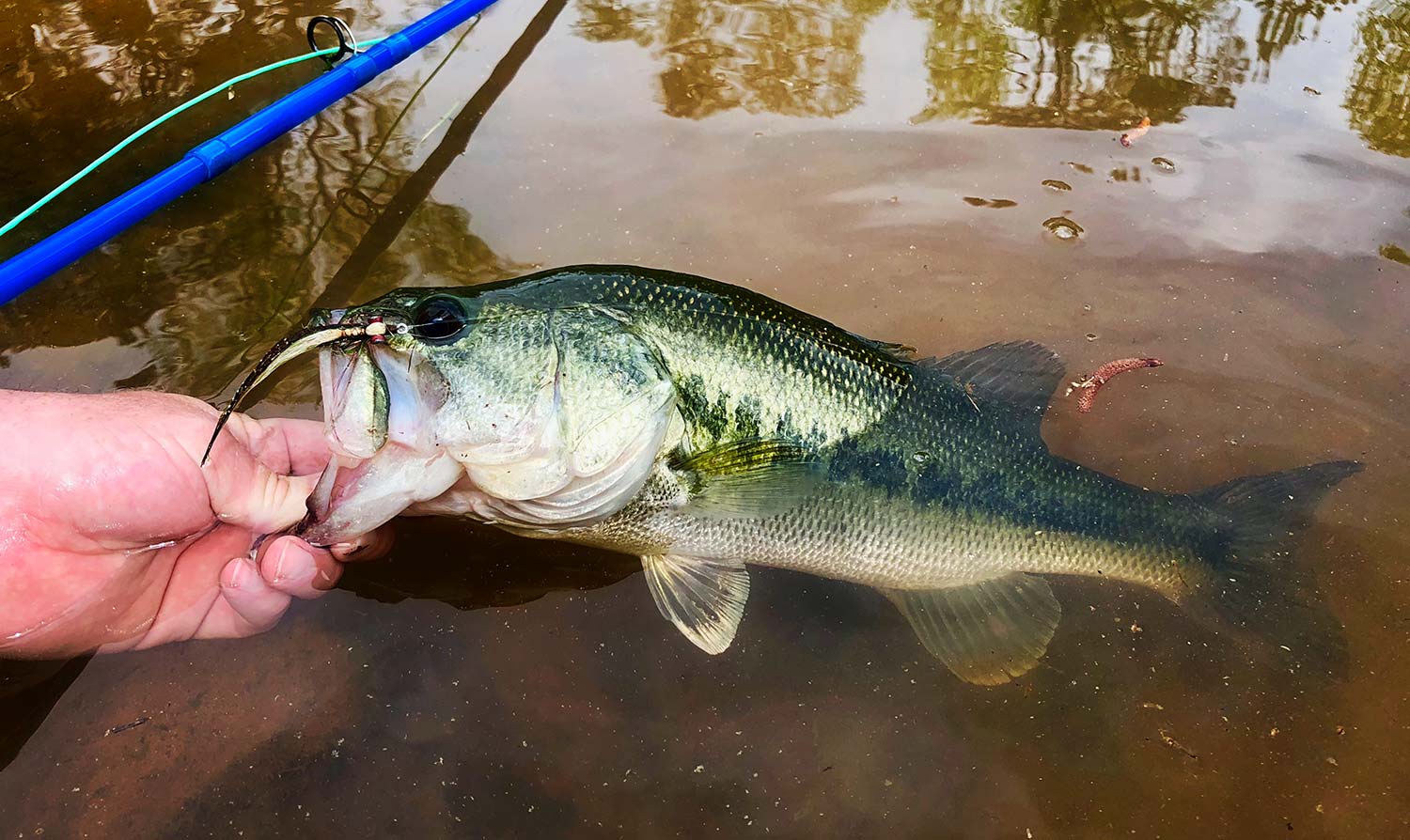
By Justin Pickett
It’s time to get serious about catching that trophy bass.
In part one we covered the when, where and how of fishing to bass on beds. Now we’re going to talk about the get, flies and presentations that make for success.
The Presentation
So, you’ve found Ms. Piggy sitting just off of her bed, seemingly staring intently towards her nest and chasing bluegill away from her vicinity. It seems as though she’ll likely eat anything dropped near or onto her bed. What’s next?
First, let’s address your setup. I recommend swinging a 7-9 weight, fast-action rod with an aggressive weight-forward floating line. You’ll need the power in the ass of a beefier rod to help set the hook solidly. I don’t stress so much on reels for bass, as they do a lot more jumping and thrashing than they do any kind of running. I do make sure to hunker down on my drag though, just in case once tries to take me into some trouble nearby. I throw short, beefy leaders when fishing to bass on beds. I need my flies to turn over quickly because I’m doing a lot of close up work in shallow water, so I typically stick with 7.5ft leaders and 12-15lb tippet.
The second thing we’re going to touch on is your timing. When you decide to hunt for these fish is going to play into your success rate. Your chances are best in the early morning and evening hours. Low light can make these fish a little harder to spot (another reason to always wear polarized sunglasses), but that’s when fish begin to drop their inhibitions and feel less threatened by predators. High sun is a great time for spotting beds and fish, but also makes it a lot easier for the fish to spot you as well. ShadowsI’ve had the glare from a raising fly rod spook many fish in my experience. I’m not saying don’t try during the middle of the day, but the odds aren’t as great. When planning your stalking, try to plan fishing during the first and last few hours of the day, or on overcast days. The other reason for fishing first thing in the morning is the fact that they have had all night to settle in and chill by their bed. This is especially true for bass that see heavy angling pressure.
Thirdly, let’s talk fly patterns. I kind of have a system that I go through when I find a fish on a bed that’s aggressively protecting the bed. My initial presentations are done with
Read More »8 Fly Patterns For Southern Appalachian Brook Trout
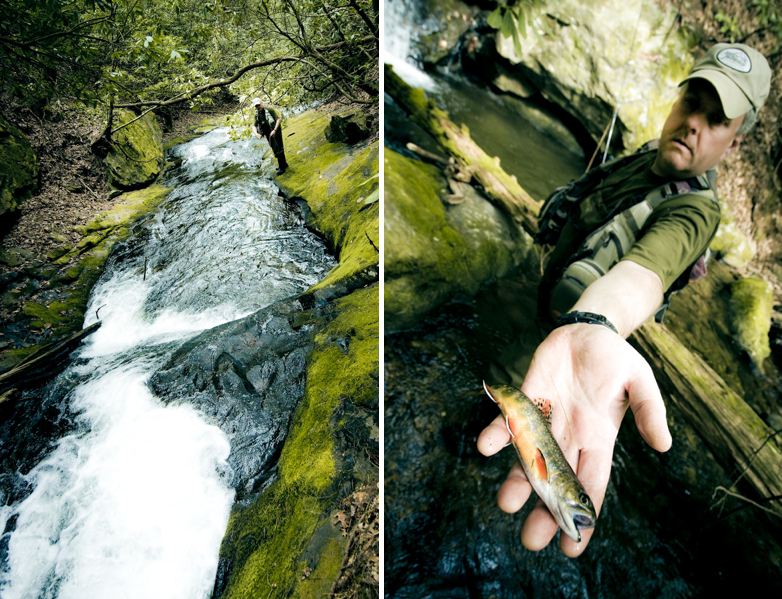
My good friend Dan Flynn is the man when it comes to hike-ins for Southern Appalachian Brook Trout.
I’ve never met a fly angler that enjoys bushwhacking through walls of thick impenetrable rhododendrons all day long, more than Dan. Randomly pick any thin line of blue on a Delorme’s Georgia or North Carolina topography map, and chances are Dan’s thoroughly explored the high elevation tributary.
Most anglers I know wouldn’t waste their time and energy for such a small catch, but that’s where most anglers go wrong in their thinking. It’s not about the size of the catch that’s the reward. Instead it’s the aura of true living that comes over you exploring high mountain streams in complete solitude. It’s the small doses of adrenaline that you feel pumping through your veins as you hike up a steep slippery waterfall to the next plunge pool. It’s the anticipation and excitement that you get as you peer over a boulder or log jam and spot a colorful native feeding on the surface. Decades of your life seem to roll back here and the kid in you is reborn. Make a trip to one of these crown jewel brook trout streams and your soul will feel cleansed and reenergized afterwards.
Southern Appalachian Brook Trout Feeding in the Current. Photo By: Louis Cahill
The best thing about brook trout fishing is that you don’t have to carry your entire fly fishing arsenal of gear with you. A fly box filled with a handful of brightly colored dry and wet flies will almost always get the job done. The biggest factor for success is
It’s Ok to Ask for Help on the Water
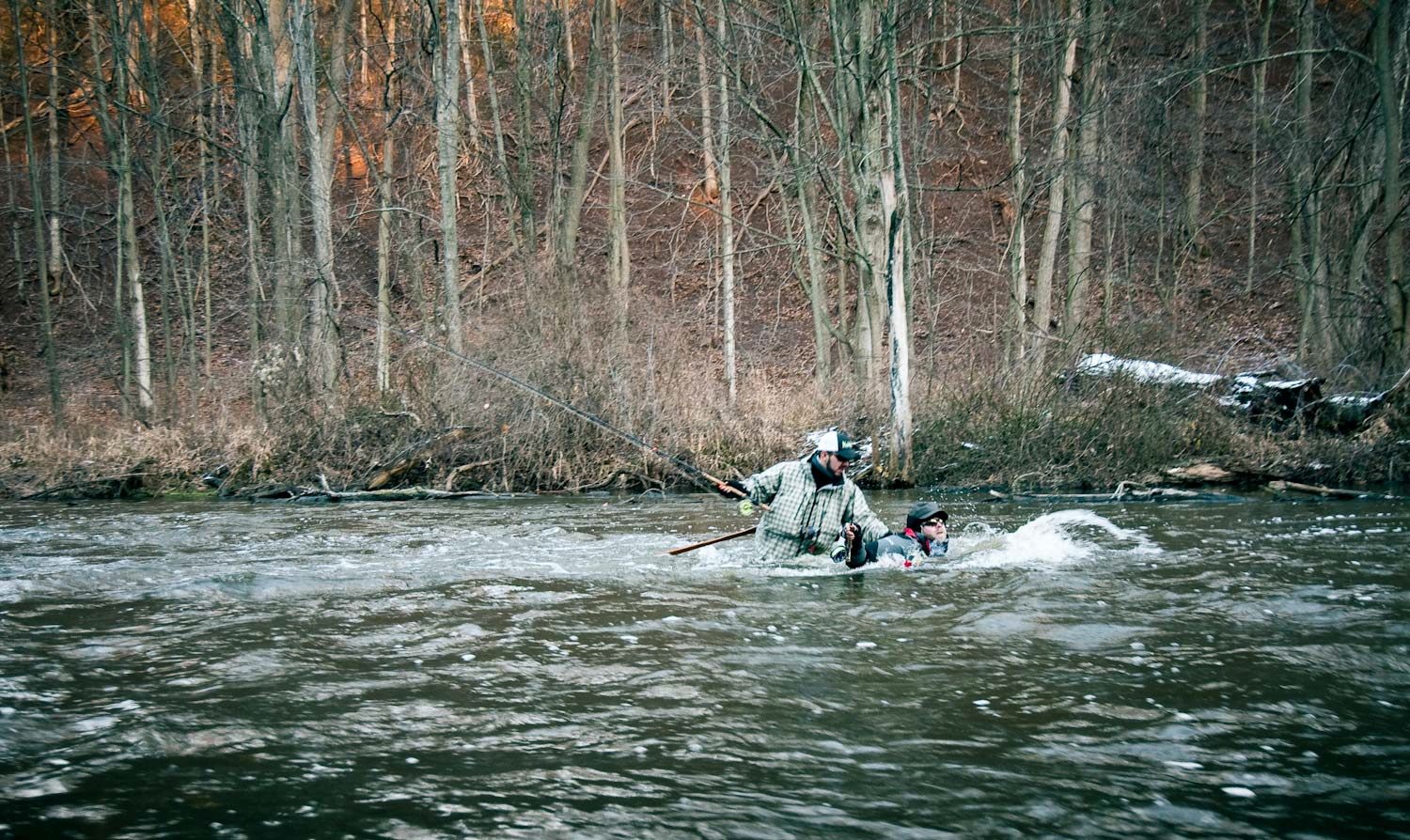
A lot of fly fisherman of both sexes get a little hesitant when it comes to holding hands or locking arms with people that aren’t kin. Don’t be Haphephobia when you’re wading in and around trout water that’s challenging to navigate, in remote areas off the beaten path or during cold weather. Making the mistake of trying to do everything on your own when you know darn well you need assistance can turn out to be a very dumb decision and put you in harms way.
Read More »Wood is Good
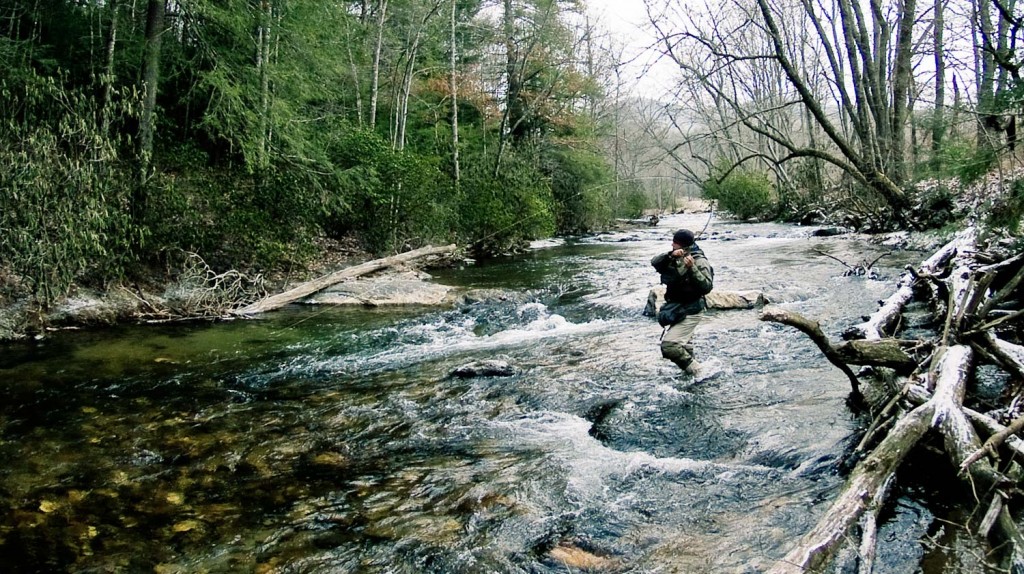
Anytime I come across any sort of wood on the water trout fishing, whether it’s a log jam, isolated root ball, or low overhanging tree, I always take the time to fish around it.
Wood offers trout cover and safety which are two very important elements that trout look for when they’re deciding where to position themselves in a river or stream. Wood also in many cases offers current breaks, eddies, and soft seams, that allow trout to feed easily and safely out of the calorie burning swift current. Furthermore, there’s an incredible amount of food that falls off wood cover and hangs out amongst wood, that very often ends up in the stomachs of trout. All of the above make wood prime habitat for trout.
Did I mention that brown trout love to hangout around wood? I can’t tell you how many times I’ve caught nice brown trout around wood, especially when deep water is located near by. And don’t even get me started about how productive it is fishing flesh flies in Alaska around all the salmon carcass loaded wood snags. Back in the day when I guided there, we used to take all our freshly filleted salmon carcasses at the end of the day and dump them in wood snags in the river. Overtime it would
Read More »The Avalon Fly- Video
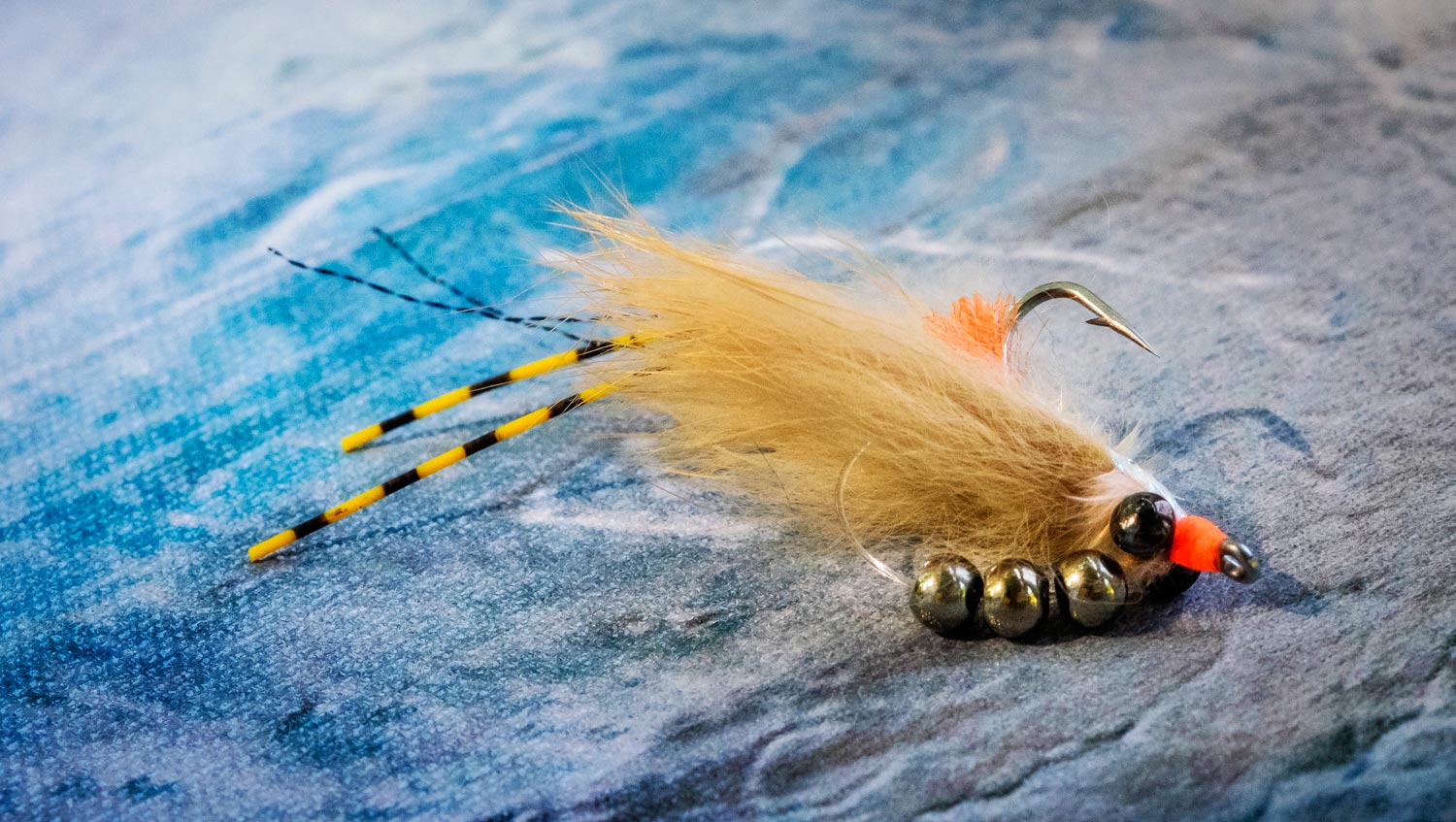
Wherever you find permit, you’ll find the Avalon.
This innovative crab pattern is a staple in most saltwater boxes. The Avalon made its name as a permit fly but it works well for bonefish and likely many other saltwater species. It has a life-like action and sinks fast to imitate a crab diving for cover. Thats the action that permit love to see.
Chase Pritchett of American Made Flies is back to show us the tie.Tie this fly in a variety of sizes, especially small. The original calls for orange rubber legs but Chase likes the yellow.
Watch this video and learn to tie the Avalon permit fly.
Read More »If The River Was Whisky
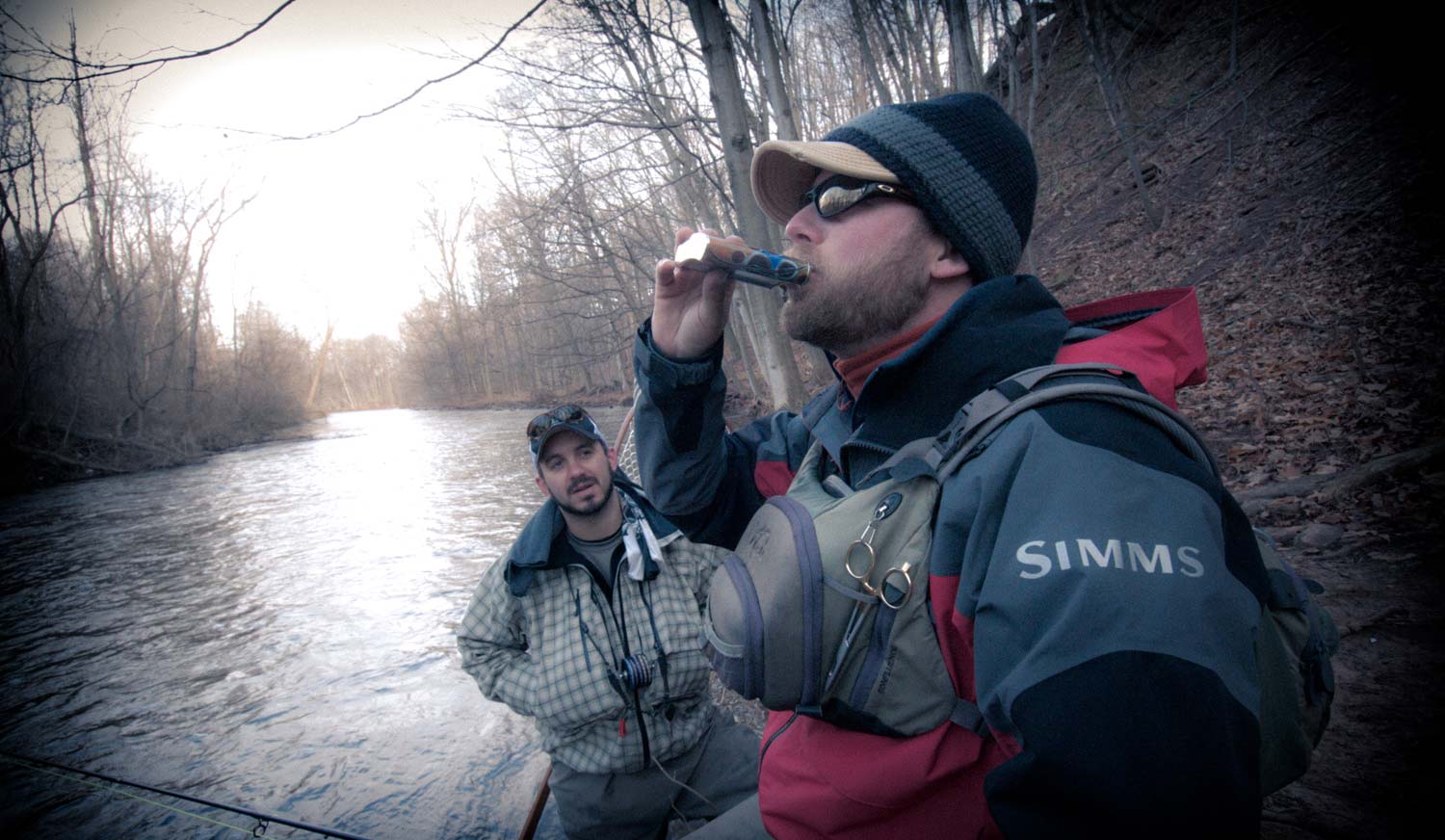
“If the river was whisky and I was a diving duck, I’d dive to the bottom and never come up.” – Muddy Waters.
Whisky and fly fishing just seem to go together. I’m certainly guilty of carrying a flask of rye on the river from time to time. I toasted my first Pacific Steelhead with a nice sip of Red Breast, courtesy of my buddy Jeff Hickman. I confess, I’m having a bit of Ardbeg as I write this.
I joined some friends for a weekend in North Carolina this fall and found my buddy Mike had just shy of two hundred bottles of scotch whisky behind the bar. Most of them way better than I’m used to. I slept like a baby in my hammock, on the porch that night and woke to find that I had stuffed my keys and wallet into my boots. I only do that when I have the suspicion that I’m on my way to doing something stupid.
Most of the river drinking I’ve experienced isn’t that classy. I remember fondly one incredibly cold day on the Oak Orchard with Kent Klewein and Charlie Murphy when we passed a bottle of cheap bourbon against the cold. The three of us shared a long run, the guy at the head taking a drink and tossing the bottle into the river to float down to the next. As we stepped down the run, the last to drink would walk back to the head and start the parade again.
At this point I probably sound like a stumbling drunk, but I really don’t drink that much. Especially when I’m fishing. I’m either not a good enough drunk or a good enough angler to do both well at the same time. I have one buddy who carries his own cooler on the boat and drinks two dozen beers on a float. He fishes just as well on his last cast as the first, and he’s damned good. Not everyone is like that.
Things got interesting on the boat one afternoon when my buddy passed out cold on the oars.
Read More »Dry Fly Fishing and the Dead Drift
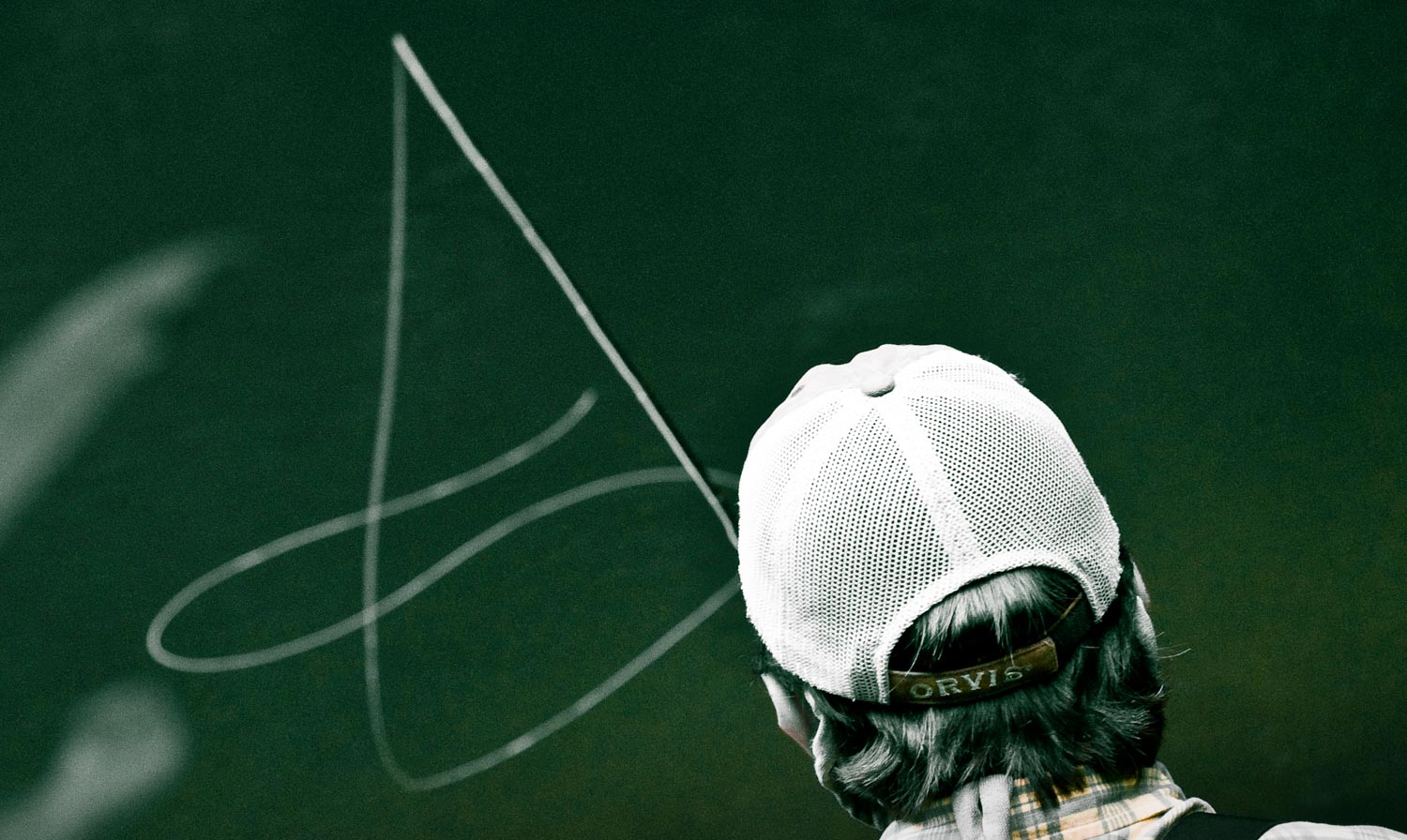
By Pudge Kleinkauf
The following is an excerpt from the book “Rookie No More: The Fly Fishing Novice Gets Guidance From A Pro”
Question: How do I achieve the “dead drift” when I’m dry fly fishing?
Answer: Most fly anglers find that fishing dry flies on the surface of the water is one of their favorite ways to fish. Seeing a fish rise up from beneath the water to take our bug imitation is a very exciting part of our sport. Called dry fly fishing, it isn’t one of the easiest of skills to master, however. Achieving the dead drift results from two things: good casting and correct management of the fly on the water.
Dry fly fishing is often referred to as “fooling fish with fur and feathers.” A good imitation of the fish’s food source, placed on the water with an appropriate cast, should result in a fly that looks and drifts on the water like the real thing. That could be an adult mayfly, caddis, or stonefly returning to the water’s surface to lay its eggs, or a bee or ant blown into the water from stream-side vegetation.
While learning to fish dry flies, you need to start by being able to track the fly on the water. Use a very visible fly a size or two larger than you need or a small fly with a bit of white or colored calf tail or poly yarn on its top to provide a focal spot for your eye to key on. Two of the best flies to use while learning to dry-fly fish are the Parachute Adams and the Royal Wulff (tied with white calf-tail wings) in a size #12.
“Find the fly on the surface just as soon as it lands,” I tell my students and clients, “and then never take your eyes off of it as it drifts along.” I also have beginners cast in fairly close to themselves until they train their eye to quickly locate the fly on the water at the end of the leader. As they become better able to judge distance, I have them extend their cast a little farther each time to learn how to spot the fly at greater distances. If you can’t follow your fly on the water, you won’t know how it is drifting.
A well-executed overhead cast is the best cast to help achieve the delicacy and gentleness of a wispy, weightless, imitation bug descending and landing on the water. The fly must land silently, delicately, and naturally. My instructor repeated over and over, “Think flutter, Pudge. The fly should ‘flutter’ to the surface, not slap down on it.” Because I could clearly see the difference between a flutter and a splat, that image worked for me.
Fluttering results from a
Read More »